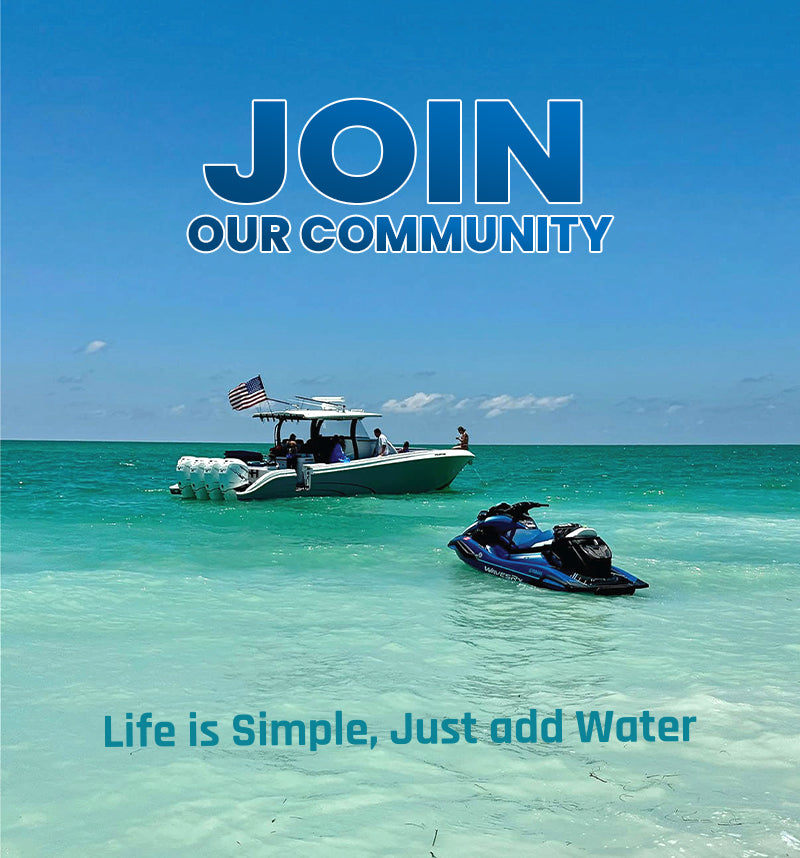What to Do When Your Boat Trailer Safety Strap Snaps
Boat trailer safety straps do one job, but it's a big one. They hold your boat in place during transport. Whether you're heading a few miles down the road or hauling across state lines, these straps are what keep your boat from bouncing or shifting around on the trailer. A well-made strap holds tight under pressure, staying firm from the moment you leave the ramp to when you reach your destination.
But what happens when one of those straps snaps mid-trip? It's not just frustrating. A broken strap can lead to hull scrapes, dented hardware, or even cause your boat to sit crooked. In the worst cases, it could slide off the trailer entirely. That kind of problem turns risky fast, both for you and anyone driving nearby. The upside? With the right steps, you can handle the moment safely, protect your boat, and move forward without bigger issues.
Immediate Actions to Take
As soon as you realize a safety strap has failed, your number one focus has to be safety. Pull over to a secure spot right away. Whether you're on a quiet road or traveling the highway, slow down gradually, put on your hazard lights, and find a place to park where you’re not in the flow of traffic.
Once parked, stay alert and assess the situation carefully. If you can’t clearly see all sides of the trailer from your mirror, get out and do a walk-around inspection. Here are some key things to check:
- Is the boat still sitting straight on the trailer?
- Are there any signs of scraping, cracking, or bent parts?
- Have any other straps loosened or gotten worn?
- Did any gear shift or fall out of its compartment?
If the boat appears to have moved or tilted, do not try to reposition it by hand. It’s better to evaluate first than to risk injury or make the situation worse. Staying calm helps you think clearly and work smarter. One boater once panicked and slammed his brakes when a strap gave out, only to end up damaging the transom. Had he taken a smoother stop and checked things first, he probably could’ve avoided it.
Once you’ve taken stock of the situation, it’s time to think about temporary solutions.
Temporary Fixes to Get You Home Safely
If the boat hasn’t shifted too far and everything else looks stable, you can try to secure it temporarily to finish the trip. Take it slow and remember, your goal is to get home safely, not quickly.
Check your vehicle or gear bag for any reserve straps or tie-downs. A good option is a backup ratchet strap, but even heavy-duty rope can work in a pinch. Here are a few ways people have rigged temporary fixes to stabilize their load:
- Use an extra trailer strap you packed as backup.
- Loop strong rope through the trailer frame and boat.
- Add bungee cords for extra tension, though not as your main hold.
- If available, use your front winch cable to help absorb some stress from the missing rear strap.
Before driving, give your temporary fix a few solid tugs to test. If it shifts or stretches easily, it's not strong enough. Only materials that feel solid and secure should be used.
For the rest of the ride, lower your speed. Skip rough roads, sharp turns, or sudden stops. If you’re miles away from home or things feel unsafe, call for help or find the nearest ramp or boatyard where you can safely unload.
Keeping a go-to backup strap or braided rope in your truck’s emergency kit can go a long way in situations like these. It’s one of those simple planning steps that makes a big difference down the line.
Assessing and Preventing Future Failure
Once your trip is done and your boat is back safely, take time to figure out why the strap gave out. It’s easy to throw it in the garage and forget about it until next season, but that leaves you open to more trouble later.
Inspect every strap on your trailer setup, not just the broken one. Go over each piece of hardware, every buckle, each hook, and anchor point. Look for signs of:
- Cracks, fraying, or faded stitching
- Rust or damage around metal parts
- Mold, especially on straps that were stored damp
- UV fading, which weakens materials over time
Often, straps fail from small wear-and-tear signs that seemed minor at first. Sun damage makes fibers brittle. Saltwater buildup weakens material edges. And poor storage can cause mildew that eats through fibers.
Here’s how to help your straps last longer:
- Wash and dry straps after use, especially when used in saltwater.
- Store dry, rolled straps off the ground in a covered area.
- Avoid leaving straps exposed to sunlight for extended periods.
- Replace anything worn out before it becomes a problem.
Just a few minutes of care after each trip extends the lifespan of your gear and avoids last-minute headaches before a new season starts.
Choosing and Replacing Safety Straps
When it’s time to replace a strap, picking the right one makes a real difference. Not every strap fits every setup, and using the wrong size or style can make your trailer less safe.
Here’s what to look for in a replacement boat trailer safety strap:
- Length and width: Match the distance and positioning of where your straps hook.
- Load rating: The strap should cover your boat’s weight for both working load and breaking strength.
- Strap material: Marine-grade polyester and nylon are the better picks for resisting sun, salt, and stretch.
- Hardware type: Ratchets or cams should be simple to tighten and stay locked without slipping loose.
- Hook style and size: Fit them to your trailer’s anchor points without risking bends or breaks.
Installing a new strap is usually straightforward. Thread it through the appropriate tie-down points, check that it’s not twisted, and crank down for a firm hold. Once tightened, tug it again to test.
After the swap, consider taking your boat for a test ride around the block. This helps confirm that everything is working as expected before hitting the highway.
Prioritizing Boat Safety on the Road
Every transport should include a check of your trailer setup. It doesn’t take long, and it can prevent damage or safety problems. Get in the habit of doing a quick walkaround before and after each outing. That last check right before pulling out can catch a loose strap, a damaged hook, or an item that didn't get locked down.
Many boating problems come from small oversights. One customer skipped replacing a peeling strap because the fibers still felt strong. On his next trip, that same strap tore on a turn. Parts of the boat shifted, breaking a taillight and putting scratches near the hull. The fix cost way more than a replacement strap would have.
Here are a few smart safety habits:
- Check all safety straps before every trip
- Swap out straps the moment they seem worn—not after they fail
- Keep gear stored right so it stays strong and dependable
Getting your boat to and from the water should feel routine. A few simple habits can keep it safe and avoid last-minute issues that might delay your day on the water.
Thinking Ahead Means More Worry-Free Rides
A snapped boat trailer safety strap can set off a stressful chain of events. But with the right approach, that one problem doesn’t have to ruin your day. Knowing how to check things safely, apply a temporary fix, and sort out replacement options means you’re back on track in no time.
Stay alert, inspect gear often, and make quality straps part of your regular boating checklist. Small steps today help protect your boat and your peace of mind—not just this trip, but every time you head out.
When it comes to transporting your boat safely, paying attention to every detail is key. At WavesRx, we understand the importance of having reliable gear, including the right boat trailer safety strap. To help keep your vessel secure during transit, browse our collection of high-quality straps built to perform in tough conditions and deliver peace of mind while you're on the move.



